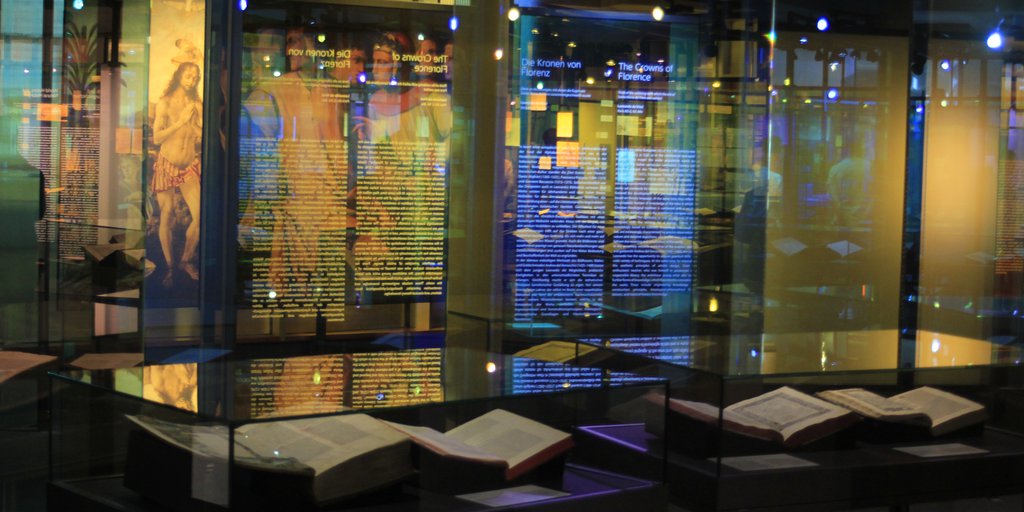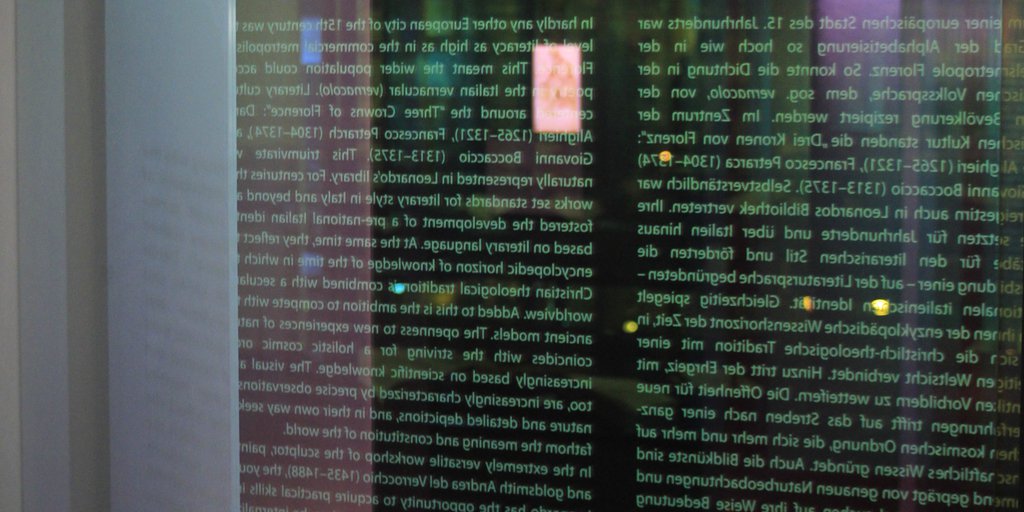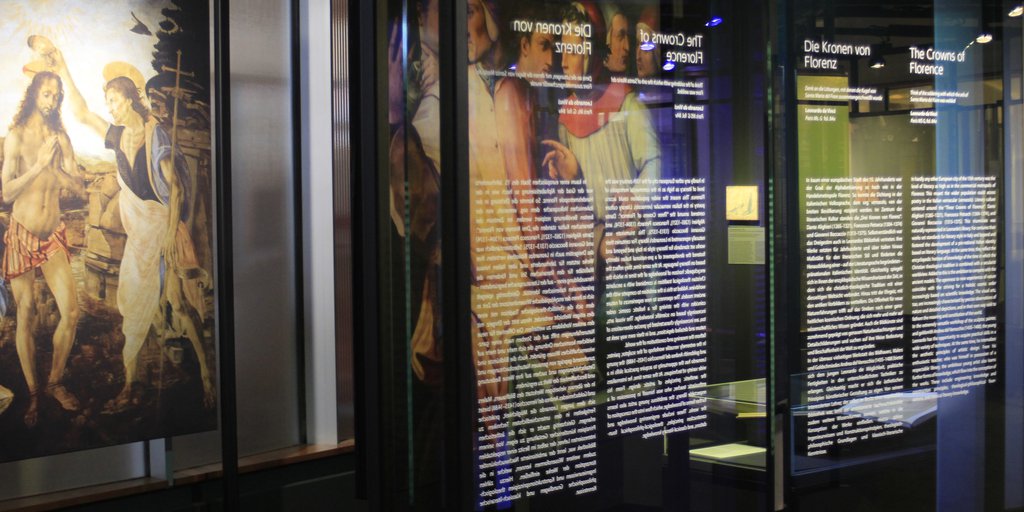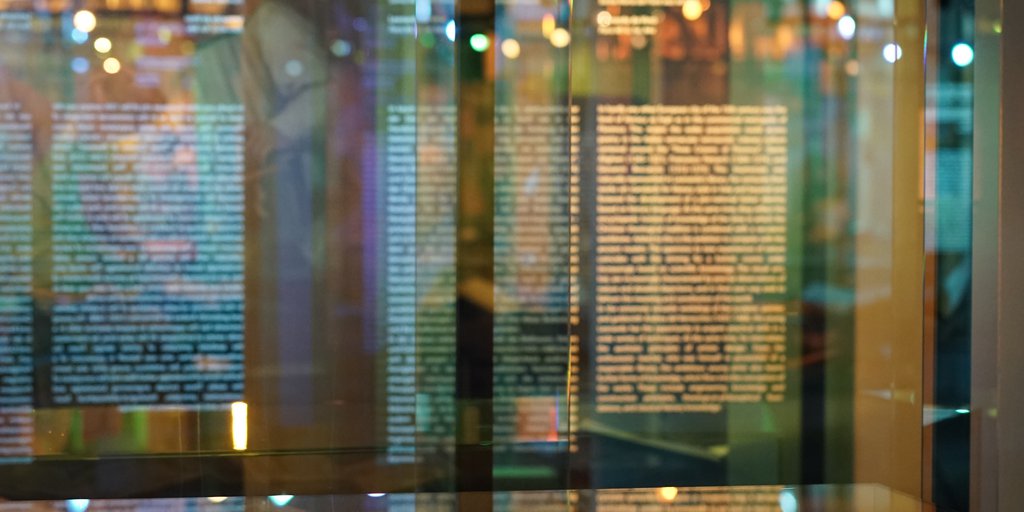
The Crowns of Florence <
Think of the soldering with which the orb of Santa Maria del Fiore was welded.
Leonardo da Vinci
Paris Ms. G, fol. 84v. Translation: Elizabeth Hughes
In hardly any other European city of the 15th century was the level of literacy as high as in the commercial metropolis of Florence. This meant the wider population could access literature in the Italian vernacular (vernacolo). Literary culture centered around the “Three Crowns of Florence”: Dante Alighieri (1265–1321), Francesco Petrarch (1304–1374), and Giovanni Boccaccio (1313–1375). This triumvirate was naturally represented in Leonardo’s library. For centuries their works set standards for literary style in Italy and beyond and fostered the development of a pre-national Italian identity based on literary language. At the same time, they reflect the encyclopedic horizon of knowledge of the time in which the Christian theological tradition is combined with a secularist worldview. Added to this is the ambition to compete with the ancient models. The openness to new experiences of nature coincides with the striving for a holistic cosmic order increasingly based on scientific knowledge. The visual arts, too, are increasingly characterized by precise observations of nature and detailed depictions, and in their own way seek to fathom the meaning and constitution of the world.
In the extremely versatile workshop of the sculptor, painter, and goldsmith Andrea del Verrocchio (1435–1488), the young Leonardo has the opportunity to acquire practical skills in a wide variety of techniques. At the same time, he internalizes the aesthetic principles of artistic design. From his enthusiastic teacher, who was himself in possession of a respectable library, the ambitious young artist also learns further forms of knowledge, which flow into the conception of the works. These include engineering knowledge and construction principles, theological-philosophical foundations, and classical literary knowledge.
Artists' Workshop <
 | 26.
Drapery study for a kneeling figure ca. 1475 |
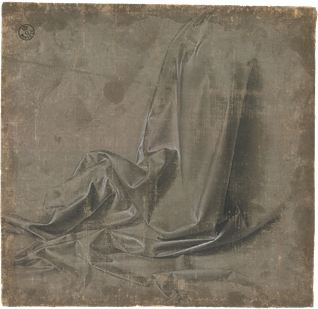
Study exercises in drapery were generally common practice in Florentine artists’ workshops. Giorgio Vasari described how Leonardo made models out of plaster-soaked cloths and reproduced them with great care on the best quality canvas. Today a total of 16 such drapery studies from the Verrocchio workshop circle are known to exist. All of them are chiaroscuro works done with paintbrush on canvas—with astonishing mimetic results. At the very least, those of the best quality are attributed to the young Leonardo. Later in life, too, he set great store by the depiction of the arrangement of folds; his treatise on painting (Life and Legacy F ●) devoted several pages to this topic. He warned aspiring painters not to think of the drapery as mere vanity, an end in itself. He wrote that the cloth should not appear “uninhabited”—instead, the painter’s task was to sheathe the limbs of the human body with the fabric in a pleasing fashion.
References
Bambach, Carmen C. 2019. Leonardo da Vinci Rediscovered. Vol. 1:
The Making of an Artist 1452–1500. 4 vols. New Haven / London: Yale University Press, 169–193.
Frank, Louis. 2019. “Les études de draperies.” In Léonard de Vinci. Exhibition catalogue Musée du Louvre, Paris, 24.10.2019–24.2.2020, edited by Vincent Delieuvin and Louis Frank. Vanves: Hazan, 37–56.
Vasari, Giorgio. 2006. Das Leben des Leonardo da Vinci. Neuübersetzt von Victoria Lorini, herausgegeben, kommentiert und eingeleitet von Sabine Feser. Berlin: Wagenbach.
